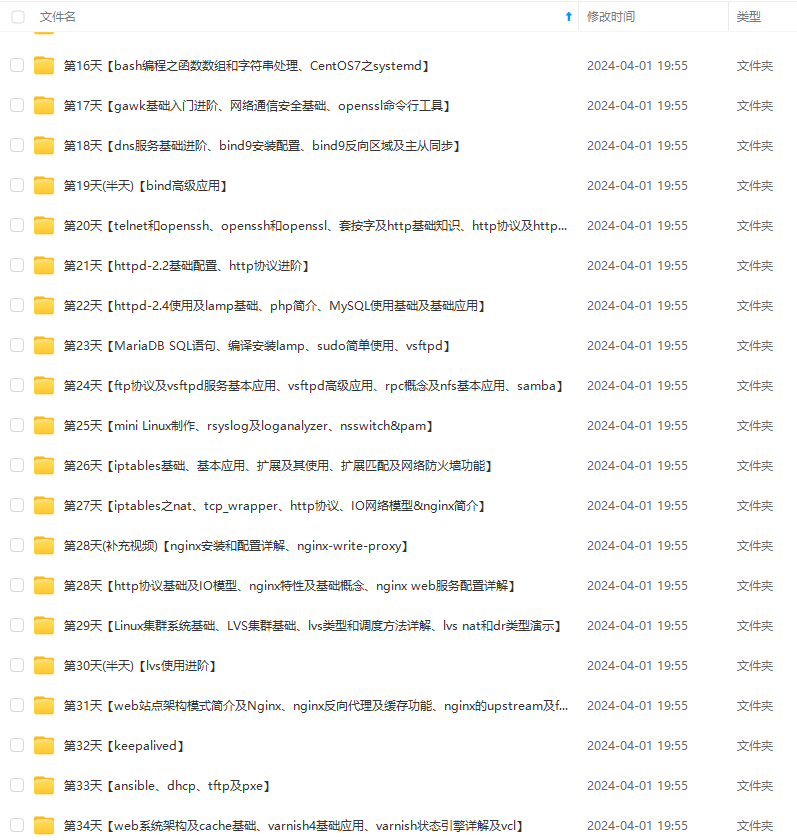...
for {
select {
...
case event := <-n.updateCh.Out():
if n.isShuttingDown {
break
}
if evt, ok := event.(store.Event); ok {
if evt.Type == store.ConfigurationEvent {
n.syncQueue.EnqueueTask(task.GetDummyObject("configmap-change"))
continue
}
n.syncQueue.EnqueueSkippableTask(evt.Obj)
}
...
}
}
可以看到,NginxController 首先启动了 Store 协程,然后启动了 syncQueue 协程,最后监听 updateCh,当收到事件后,经过简单判断就向 syncQueue 写入了一个 task。
再来看 Store 协程,跟踪到 internal/ingress/controller/store/store.go#Run()
func (s k8sStore) Run(stopCh chan struct{}) {
s.informers.Run(stopCh)
…
}
可以看到,继续调用了 informer 的 Run 方法,继续跟踪,还在这个文件,移步到 148 行左右
// Run initiates the synchronization of the informers against the API server.
func (i *Informer) Run(stopCh chan struct{}) {
go i.Endpoint.Run(stopCh)
go i.Service.Run(stopCh)
go i.Secret.Run(stopCh)
go i.ConfigMap.Run(stopCh)
…
go i.Ingress.Run(stopCh)
…
}
我们不难发现,informer 的 Run 方法,会起更多的协程,去监听不同资源的变化,包括 Endpoint、Service、Secret、ConfigMap、Ingress。我们以 Ingress 为例,跟踪到其定义处,仍在这个文件,找到 New() 方法
// New creates a new object store to be used in the ingress controller
func New(… updateCh *channels.RingChannel …) Storer {
…
store.informers.Ingress = infFactory.Extensions().V1beta1().Ingresses().Informer()
…
ingEventHandler := cache.ResourceEventHandlerFuncs{
AddFunc: func(obj interface{}) {
…
updateCh.In() <- Event{
Type: CreateEvent,
Obj: obj,
}
},
DeleteFunc: func(obj interface{}) {
…
updateCh.In() <- Event{
Type: DeleteEvent,
Obj: obj,
}
},
UpdateFunc: func(old, cur interface{}) {
…
updateCh.In() <- Event{
Type: UpdateEvent,
Obj: cur,
}
},
}
…
store.informers.Ingress.AddEventHandler(ingEventHandler)
…
}
可以看出,Ingress 协程定义了监听 ingress 信息的 informer 对象,并注册了相关事件的回调方法,在回调方法内向之前提到的 updateCh 写入了事件,进而也就达到了当资源变化时通知 Controller 主程向同步队列写入task的目的。
反过头来,看一下 syncQueue ,首先找到其定义,跟踪到 internal/ingress/controller/nginx.go#NewNGINXController()
// NewNGINXController creates a new NGINX Ingress controller.
func NewNGINXController(config *Configuration, mc metric.Collector, fs file.Filesystem) *NGINXController {
…
n.syncQueue = task.NewTaskQueue(n.syncIngress)
…
}
不难发现,队列的创建是通过 task.NewTaskQueue() 完成的,而且传入了关键的处理函数 n.syncIngress
继续跟踪到 internal/task/queue.go#NewTaskQueue()
// NewTaskQueue creates a new task queue with the given sync function.
// The sync function is called for every element inserted into the queue.
func NewTaskQueue(syncFn func(interface{}) error) *Queue {
return NewCustomTaskQueue(syncFn, nil)
}
// NewCustomTaskQueue …
func NewCustomTaskQueue(syncFn func(interface{}) error, fn func(interface{}) (interface{}, error)) *Queue {
q := &Queue{
queue: workqueue.NewRateLimitingQueue(workqueue.DefaultControllerRateLimiter()),
sync: syncFn,
workerDone: make(chan bool),
fn: fn,
}
…
return q
}
可以看出,传入的处理函数 n.syncIngress 被赋值给 Queue 的 sync 属性了。实际上,syncQueue 的执行就是在反复执行该方法以消费队列里的元素。Queue 的 Run 定义可以在本文件中找到:
// Run starts processing elements in the queue
func (t *Queue) Run(period time.Duration, stopCh <-chan struct{}) {
wait.Until(t.worker, period, stopCh)
}
// worker processes work in the queue through sync.
func (t *Queue) worker() {
for {
key, quit := t.queue.Get()
…
if err := t.sync(key); err != nil {
t.queue.AddRateLimited(Element{
Key: item.Key,
Timestamp: time.Now().UnixNano(),
})
} else {
t.queue.Forget(key)
t.lastSync = ts
}
t.queue.Done(key)
}
}
同步队列协程的主要工作就是定期取出队列里的元素,并利用传入的 n.syncIngress (即 t.sync(key))方法处理队列里的元素。
n.syncIngress 方法的定义在 internal/ingress/controller/controller.go#syncIngress()
// syncIngress collects all the pieces required to assemble the NGINX
// configuration file and passes the resulting data structures to the backend
// (OnUpdate) when a reload is deemed necessary.
func (n *NGINXController) syncIngress(interface{}) error {
// 获取最新配置信息
....
// 构造 nginx 配置
pcfg := &ingress.Configuration{
Backends: upstreams,
Servers: servers,
PassthroughBackends: passUpstreams,
BackendConfigChecksum: n.store.GetBackendConfiguration().Checksum,
}
...
// 不能避免 reload,就执行 reload 更新配置
if !n.IsDynamicConfigurationEnough(pcfg) {
...
err := n.OnUpdate(*pcfg)
...
}
...
// 动态更新配置
err := wait.ExponentialBackoff(retry, func() (bool, error) {
err := configureDynamically(pcfg, n.cfg.ListenPorts.Status, n.cfg.DynamicCertificatesEnabled)
...
})
...
}
reload 配置的函数定义位于 internal/ingress/controller/nginx.go#OnUpdate(),具体就不解释了,读者可自行查阅。
这里主要看下动态更新是怎么完成的,函数定义位于 internal/ingress/controller/nginx.go#configureDynamically()
// configureDynamically encodes new Backends in JSON format and POSTs the
// payload to an internal HTTP endpoint handled by Lua.
func configureDynamically(pcfg *ingress.Configuration, port int, isDynamicCertificatesEnabled bool) error {
backends := make([]*ingress.Backend, len(pcfg.Backends))
for i, backend := range pcfg.Backends {
var service *apiv1.Service
if backend.Service != nil {
service = &apiv1.Service{Spec: backend.Service.Spec}
}
luaBackend := &ingress.Backend{
Name: backend.Name,
Port: backend.Port,
SSLPassthrough: backend.SSLPassthrough,
SessionAffinity: backend.SessionAffinity,
UpstreamHashBy: backend.UpstreamHashBy,



既有适合小白学习的零基础资料,也有适合3年以上经验的小伙伴深入学习提升的进阶课程,涵盖了95%以上运维知识点,真正体系化!
加入社区》https://bbs.csdn.net/forums/4304bb5a486d4c3ab8389e65ecb71ac0
25636469319)]
[外链图片转存中…(img-IRNnslMq-1725636469320)]
[外链图片转存中…(img-61IZCJBY-1725636469320)]
既有适合小白学习的零基础资料,也有适合3年以上经验的小伙伴深入学习提升的进阶课程,涵盖了95%以上运维知识点,真正体系化!
加入社区》https://bbs.csdn.net/forums/4304bb5a486d4c3ab8389e65ecb71ac0





















 2917
2917

 被折叠的 条评论
为什么被折叠?
被折叠的 条评论
为什么被折叠?








